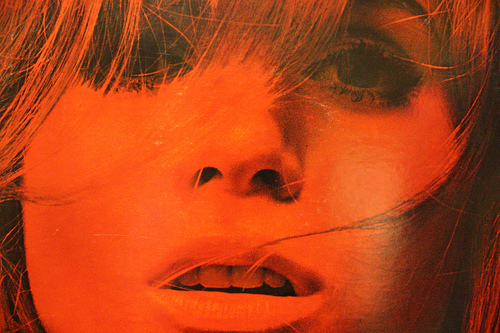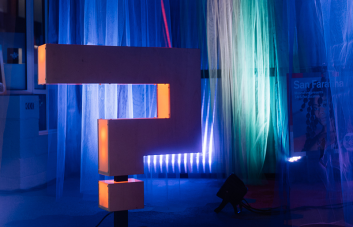So, following some perhaps justifiable criticism from much-valued TRUANTS reader, ‘Eric’, I’m going to take the time to go back to disco roots. Before the music even started – this might shed some light on the many stereotypes and supposed urban myths surrounding the genre! If you want to see this criticism from Eric it’s in the comment section of LADOD pt.2. Eric felt that my description of a hypothetical ultimate disco fanatic being homosexual and/or African American was stereotypical and suggested a lack of research on my behalf, and this is understandable. But the thing is, it’s really not that far from the truth.
Here’s what we’ve covered so far… Disco as a genre was created by the mainstream American radio – the movement and the music however was considered “small, gritty and underground” by the founders and fans. Subsequently, the original disco fans scoff at the use of the term ‘disco’, but instead felt that the music they knew and loved had a lot more soul and meaning over what was plastered across the radio in the late 1970s. And, we covered briefly, in its early days; the music was centered around the themes of freedom, togetherness, and love. But how did disco begin? And why are the gays and blacks (fuck political correctness, I have the utmost respect for both cultures and neither appreciate being patronized with P.C. jargon) so heavily involved, or at least stereotypically tied in with the music, the fashion and the message. Here’s why.
It’s the last weekend of June, 1969. We’re in the Stonewall Inn, peaceful, liberal Greenwich Village, bustling New York City. The night is hot and the air is thick with humidity and tension – anti-war protests dominating the media, the African American Civil Rights Movement placing the government under immense pressure – issues of liberty with the ability to flip any conversation into heated debate. But look around, it’s an average bar, cheap drinks, tacky decorations, funky music – but wait… there’s something different. Something wrong? No, but unusual. The men look like women, the women are dressed like men, the hippies are getting rowdy and the residents of Christopher Street have crowded around the establishment for a better view. Yeh, that’d be it. Across the street is the Women’s Correctional Centre, the inmates adding to the hubbub as they let fly burning tissue paper on to the sidewalk below. We start to feel uncomfortable. The several police on their routine raid are now huddled behind the bar in fear of the sudden outburst from the freaks and queers. Sure the bar is owned by the Mafia, but no one would so publicly stand up against the NYPD, especially not the homosexual community, right? ‘Let my people go!’ sings a flamboyant young black man as coins and rocks begin to hurtle towards the bar. ‘Faggot cops!’
“HOME NEST RAIDED, QUEEN BEES ARE STINGING MAD” – The New York Daily, headline, June 28, 1969.
No one knows why the inn was chosen to be raided that night, but there’s no doubt that the police would come to regret it. “There was never any time that I felt more scared than then” recalls New York cop Seymour Pine. Very few places in the 50s and 60s catered to the homosexual community – and these places often suffered the wrath of police harassment. Not tonight, this was the Stonewall rebellion, the night when gay New York took to the streets and threw itself a revolution. But this was a rebellion of a different kind – more vivid street theatre than armed revolt. It was the culmination of decades of oppression and humiliation. Spurred by black Americans’ fight for civil rights, and inspired by the women’s liberation movement, Stonewall was the landmark event which initiated the birth of gay pride. One cross-dressing lesbian named Stormé DeLarverie (who, rumor has it, may have kick-started the action) said, “The police got the shock of their lives when those queens came out of that bar and pulled off their wigs and went after them.”
It’s regarded as the defining event that marked the beginning of the gay rights movement in the United States, and around the world.
How does this fit with disco? Well, following the Stonewall Riots (which included the following evening of protest and several weeks post that monumental June night), activist groups began emerging first in Greenwich Village, then all across New York City, establishing news papers and committees, protests and marches to promote universal liberalism and equal rights for all United States citizens. Of most interest to us – they also founded places – bars, clubs, stalls and halls – where the transgender community, the drag queens, effeminate young men, hustlers, the homeless youth, the African Americans, the Cuban Americans, the Latin Americans, the oppressed men and women of New York City could meet, celebrate their liberty and boogie the fuck down. And what was the music of choice? Oooh, you can guess. So the modern discotheque was born, with DJs like Francis Grasso practicing radical new techniques such as slip-cueing and beat matching, and the musicians of New York uniting the minorities – and all else with a lust for freedom and a passion for music – on the dance floor.
I hope that clears things up a little. It’s a touchy subject; both the homosexual community and racial minorities still facing a lot of tribulation across the globe. I for one can’t stand it. And hey, that ties in with two of the three themes of disco – freedom and togetherness. These themes were often not only explored through the music, but the musicians themselves, with men and women of different race performing together, and the venues and their DJs, catering to all walks of life; playing rhythm and blues, salsa, funk, folk and anything in-between with a steady beat and a funky bass line.
It’s feedback time! A little like payback time, just a lot less vengeance I suppose. I’d like to know what you guys want more of. Find the disco history interesting? More interested in collecting some disco tunes? Want to hear the mainstream classics? Intrigued by the enigmatic early disco? It’s up to you guys – leave a comment and I’m yours to utilize in the quest for disco bliss. Meanwhile, one of my favourite post-disco disco bands (figure that out).
The Strikers – Body Music (256 kbps)
The Strikers – Body Music (Radio Edit, 256 kbps)
Straight up dance floor disco, all 14 minutes and 25 seconds of it. The Strikers were an African-American 7 piece from NYC signed to the famous Prelude Records. Debut release of Body Music (A) and Feel Free (B) (including follow-up mix from Francois K and DJ legend Larry Levan), 1980, reached little commercial success but earned a lot of love in a lot of disco hearts. Band members included Darryl Gibbs, Howie Young, Milton Brown, Robert Gilliom, Robert Rodriguez, Willie Slaughter (lol?) and vocalist Ruben Faison, who went on to join weirdo space-funk band, ‘Warp 9’.
The Strikers – Inch By Inch (256 kbps)
The Strikers – Inch By Inch (Radio Edit, 256 kbps)
1 second in. Eerie vocals.
7 seconds. Oh, I like a bit of cowbell.
14 seconds. Is this a percussion jam?
17 seconds. Now that’s some disco guitar.
23 seconds. That sounds pretty (I have a very short attention span).
27 seconds. Testin’ out the kick drum I guess…
31 seconds. And the magic begins.
The Strikers – Strike It Up (YouTube)
More funk than disco, this bass line-oriented ditty is a real foot-stomper, fist-pumper, if you’re as dorky as I am that is, and enjoy rocking out to early 80s funk jams. Can you imagine walking down a New York avenue to this? With a wide-brimmed hat and a cane? Where’s my time machine, dammit! [Unfortunately I only have this tune on vinyl, so here’s a YouTube link for your listening pleasure.]




YAH DAAAAAAMN! This is good. Especially dig the Strike It Up tune.
yayyy i like :))
gay revolution ftw!
I would like to hear about disco legends and good anecdotes about them. I love the way you tell stories. Please share some funny stories, tell us about the (un)obvious disco people we should know about, scandals. And more tunes!
Great read Tom! I can see you’ve read ‘Last Night A DJ Saved My Life’ haha! Keep us with this Disco thing, I’m such a disco noob so it’s great!
Thanks lizzy :)
Sure thing Immmm, I’ll start doing some profiling! And i’ll get a mix done. I can’t guarantee that the mix will have any profound meaning, but it’ll be gooood music !
Yes Louis, i’m reading this book for the first time and enjoying it hugely! It’s got a lot of good stuff which i can use for a basis then i try flesh it out with info from other sources. Trying my hardest to avoid wikipedia haha but then again it seems that wikipedia knows very little about disco !
I’ll try and cut down on my article length in future, too ;)
Whyyyyyyyyyyyyyyyyyyyyy! Don’t worry. I only put it under a cut so it wouldn’t take over the entire layout but it’s lovely and such a good read! I’m not trying to force you to write lengthy articles or something but please don’t worry about it.
Hello Tom!
I enjoy the history stuff. My dad does it too lol, true story.
Post some Bee Gees!!
Ciao
its great thomas… more please
I also vote for more disco music!! And disco dancing, obviously
Excellent post! Yes–the Strikers, amazing dance memories! Don’t forget the fab “Inch By Inch” also by the Strikers, written by Lotti Golden & Richard Scher, who also wrote and produced the Warp 9 hits “Nunk” and “Light Years Away.” BTW, Lotti Golden’s LP “Motor-Cycle” which she recorded in the early 1970’s as a singer-songwriter is a cult classic, worth checking out.